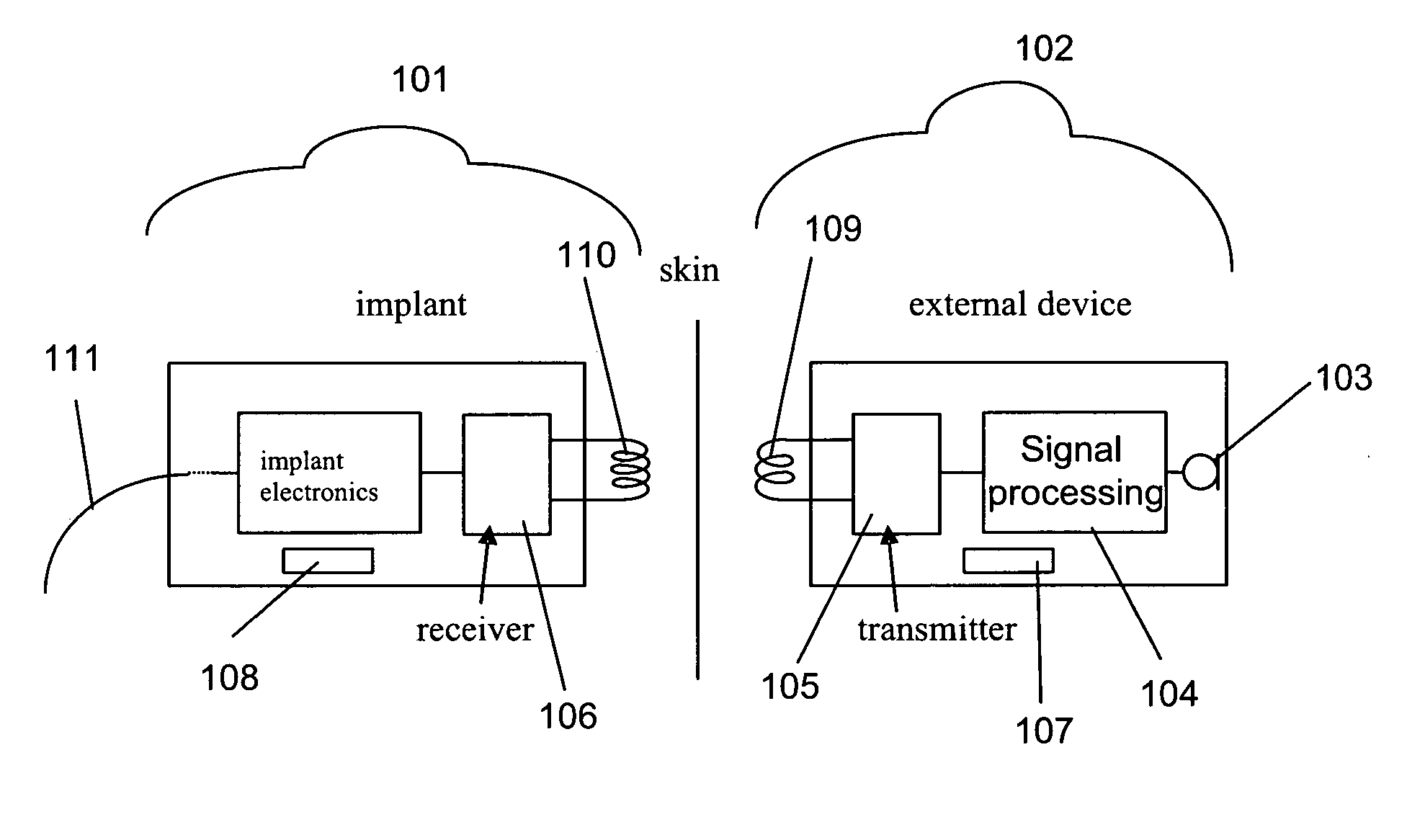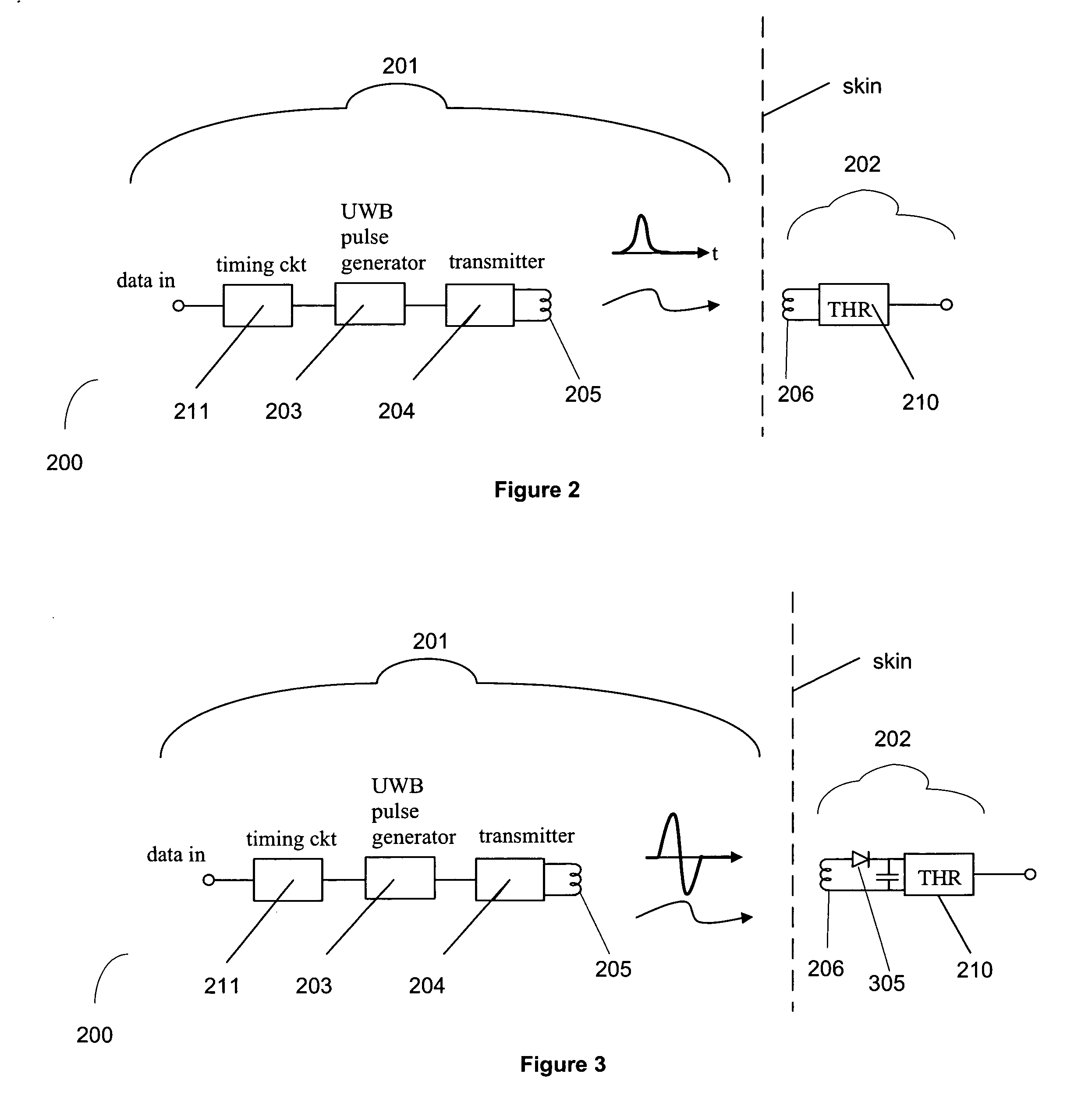Low power signal transmission
a low-power signal and transmission technology, applied in the direction of transmission, ear treatment, head electrodes, etc., can solve the problems of over-whelming percentage of total power consumption, negligible power consumption of processing in the baseband, and large threshold voltage of diode rectifiers, so as to eliminate low-frequency spectral components
- Summary
- Abstract
- Description
- Claims
- Application Information
AI Technical Summary
Benefits of technology
Problems solved by technology
Method used
Image
Examples
Embodiment Construction
[0028] In illustrative embodiments of the invention, a system and method for low power signal transmission between, for example, parts of a hearing system, is presented. The low power signal transmission is achieved by transmitting very short ultra wideband (UWB) pulses. In various embodiments, the transmitted UWB signals are representative of signals having a bandwidth not exceeding 1 or 2 MHz. The UWB pulses can thus be transmitted at a very small duty cycle, resulting in very low transmitter power consumption. Additional power savings are realized at the receiver by using passive receivers or gated receivers which are synchronized to the incoming UWB pulses. Details of illustrative embodiments are discussed below.
[0029] Ultra Wideband (UWB) technology is a relatively new communication technology that is fundamentally different from communication using modulated methodologies. See for example, U.S. Pat. No. 6,031,862, entitled “Ultra-wideband Communication System and Method,” whi...
PUM
 Login to View More
Login to View More Abstract
Description
Claims
Application Information
 Login to View More
Login to View More - R&D
- Intellectual Property
- Life Sciences
- Materials
- Tech Scout
- Unparalleled Data Quality
- Higher Quality Content
- 60% Fewer Hallucinations
Browse by: Latest US Patents, China's latest patents, Technical Efficacy Thesaurus, Application Domain, Technology Topic, Popular Technical Reports.
© 2025 PatSnap. All rights reserved.Legal|Privacy policy|Modern Slavery Act Transparency Statement|Sitemap|About US| Contact US: help@patsnap.com



